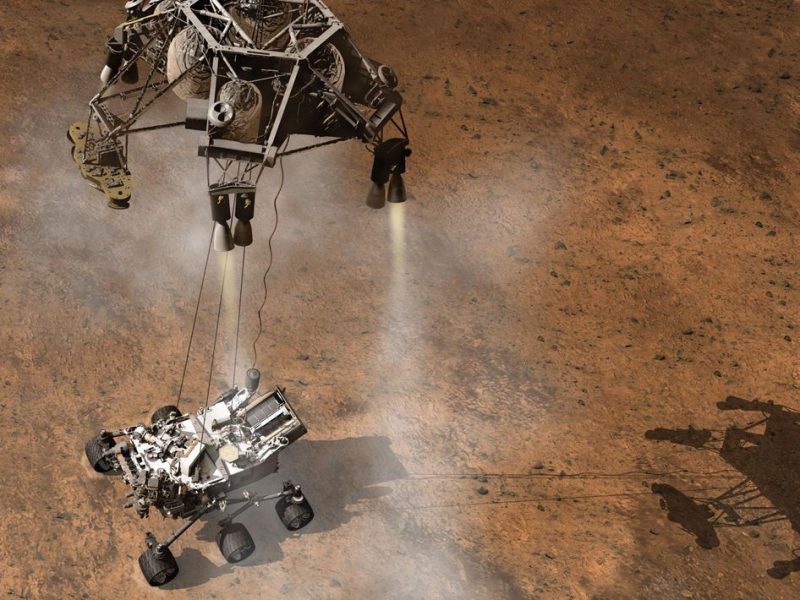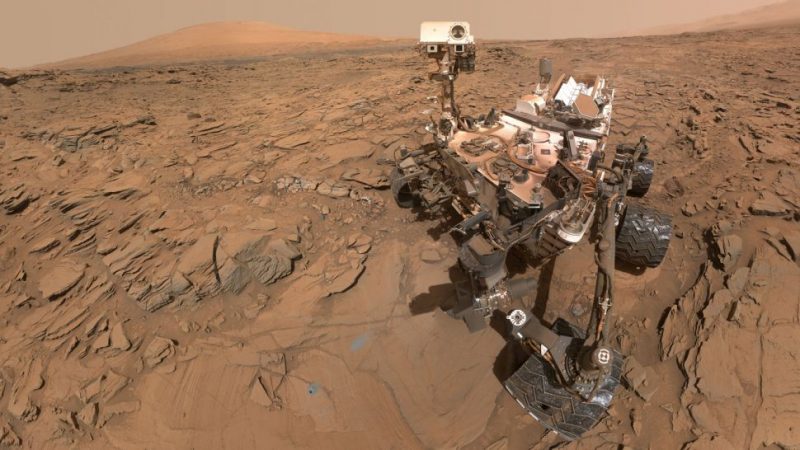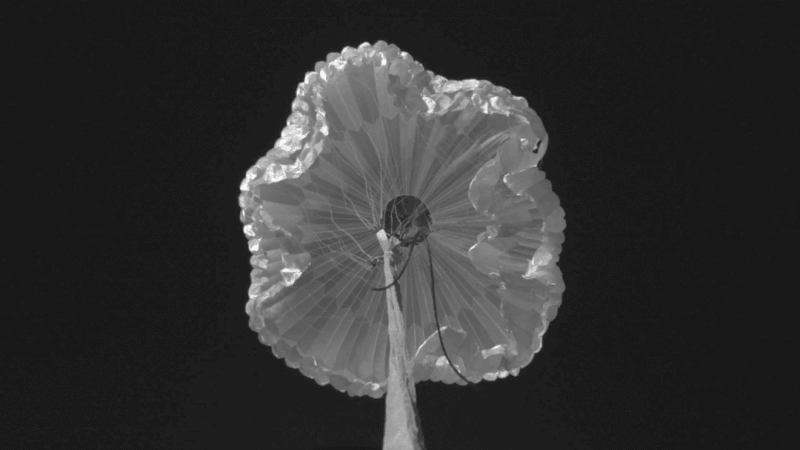10 years ago today: A nail-biter of a Mars landing
Today is the 10-year anniversary of the Curiosity rover’s successful landing on the planet Mars. The landing was unprecedented for its use of new technologies designed to get the rover to Mars’ surface safely. Curiosity hit the top of Mars’ thin atmosphere at a velocity of about 13,000 miles per hour (about 6,000 meters per second). In seven minutes, it had to decelerate and then set down, hopefully gently, on the red planet’s surface. Space engineers at the time described the landing as:
… seven minutes of terror.
And, to everyone’s great relief, Curiosity set down safely in Gale Crater on Mars at 10:31 p.m. Pacific Daylight Time on August 5, 2012.
Getting there is easy, but landing there is not
Going to the red planet is relatively easy. But landing on Mars is hard. In 2003, veteran NASA official Firouz Naderi commented:
Mars is a favorite target.
We – the United States and former USSR – have been going to Mars for 40 years. The first time we flew by a planet, it was Mars. The first time we orbited a planet, it was Mars. The first time we landed on a planet it was Mars. And the first time we roved around the surface of a planet, it was Mars. We go there often.
Around that time – around the turn of this century – the world was averaging about two failures for every three spacecraft launched toward Mars, according to NASA. There were a total of 39 Mars missions launched, and 25 failures or partial failures by the year 2000, according to Wikipedia.
But then we got better at it. And as the video above shows, Curiosity’s landing used a combination of complicated new technologies, including a new guided entry system and a rocket-powered sky crane that used cables to lower the 1-ton robot rover to the Martian surface.
Mars Curiosity rover still going strong
Since 2012, Curiosity has been crawling across Mars’ surface serving as a robot extension of our human senses in exploring Gale Crater on Mars. Curiosity has covered more than 17 miles (27 kilometers) of Mars. The rover has learned, among many other things, that Gale Crater might once have held a great salty lake.
Visit NASA’s Mars Curiosity rover page
Check this out: 8 Martian postcards to celebrate Curiosity’s landing anniversary


Perseverance was the next to land
Curiosity was followed to Mars by another robot rover, Perseverance, which launched from Earth on July 30, 2020. Finally, Perseverance touched down on Mars landing in Jezero crater on Mars on February 18, 2021. And Perseverance is largely the same design as Curiosity. When the $2.4 billion spacecraft carrying it reached Mars, it also hit the atmosphere at high speed (more than 12,000 miles per hour or 19,000 km/h) and then came to a complete stop on Mars’ surface seven minutes later. Like Curiosity, it landed via “sky crane,” but with one big difference: the sky crane technology was now tried-and-true.
Still, as with Curiosity, space engineers surely experienced a nail-biting seven minutes, waiting to hear that the Perseverance rover had set down successfully, as gently as it could, on Mars’ surface.
There, it joined the other Mars rovers in the search for life on Mars, and an exploration of the planet’s surface, atmosphere and history. Perseverance brought with it a special helicopter named Ingenuity that has explored the Martian surface as well.
Visit NASA’s Mars Perseverance rover page
Why focus so many spacecraft on Mars?
Read more from the NY Times: Too much Mars? An interesting discussion between two veteran space journalists about why Mars seems to absorb so much of the oxygen – and budgetary resources – in the rooms where explorations of our solar system are decided.

Why is landing on Mars so hard? This 2017 video from MinutePhysics does a great job of explaining it:
Bottom line: Watch a NASA video describing the final seven minutes of the Curiosity rover’s chilling descent to the surface of Mars 10 years ago on August 5-6, 2012. And learn a bit about how the rover Perseverance landed on Mars in 2021.
Read more from NASA: Curiosity’s Entry, Descent and Landing
Enjoying EarthSky? Sign up for our free daily newsletter today!
Curiosity rover on Mars snags highest-resolution panorama yet
Mars rover measures key life ingredient
The post Mars Curiosity rover’s ‘7 minutes of terror’ first appeared on EarthSky.
0 Commentaires